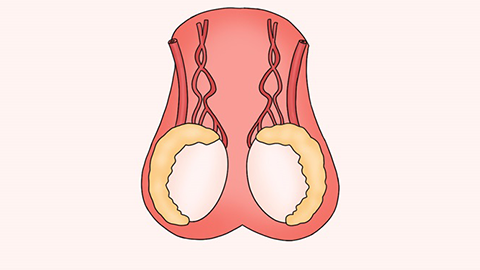What causes pain between the anus and the testicles, and what should I do?
Generally, the area between the anus and the testicles is referred to as the perineum. Perineal pain might be related to prolonged sitting, trauma, prostatitis, varicocele, perianal abscess, and other factors. Timely treatment, including general management, medication, or surgery, should be administered according to the underlying cause. If discomfort occurs, prompt medical consultation is recommended. Detailed analysis is as follows:

1. Prolonged Sitting
Maintaining the same sitting posture for extended periods may cause the muscles in the perineal area to remain tense. If the muscles are unable to relax, impaired blood circulation may lead to localized pain. It is recommended to relieve symptoms through appropriate physical activity, massage, heat application, and other methods to promote blood circulation.
2. Trauma
If the perineal tissue sustains injury, such as a contusion or crush injury, localized pressure may develop, causing pain and discomfort. Prompt wound examination is necessary. Minor injuries may gradually improve with adequate rest, while larger wounds may require local disinfection and cleaning for proper management.
3. Prostatitis
Prostatitis can result from bacterial infection, urinary dysfunction, or other factors. As the condition progresses, congestion and swelling of the prostate may occur, potentially causing perineal pain. It is commonly accompanied by symptoms such as frequent urination and urgency. Treatment may involve medications like Levofloxacin Hydrochloride Capsules, Tamsulosin Hydrochloride Sustained-Release Capsules, and Prostat Tablets, as directed by a physician.
4. Varicocele
Varicocele occurs due to impaired venous return or valve dysfunction within the spermatic veins. When local blood circulation is compromised, pressure may develop, leading to the aforementioned discomfort. Symptoms may include decreased sexual function and visible vascular bulging. Treatment may involve medications such as Sodium Aescinate Tablets, Diosmin Tablets, and Wuzi Yanzong Pills, as advised by a doctor.
5. Perianal Abscess
A perianal abscess is typically associated with acute suppurative infection in the local or surrounding tissues. Once inflammation leads to abscess formation, surrounding tissues may be compressed, resulting in pain in the perineal region. Symptoms often include fever, chills, and fatigue. Upon diagnosis, timely incision and drainage of the abscess should be performed under medical guidance, involving surgical incision and thorough removal of the pus.
It should be noted that when experiencing perineal pain, touching the area frequently should be avoided to prevent cross-infection. Additionally, appropriate clothing is important to avoid tight garments that may compress the area and exacerbate pain.




